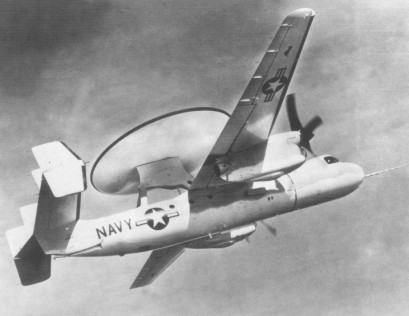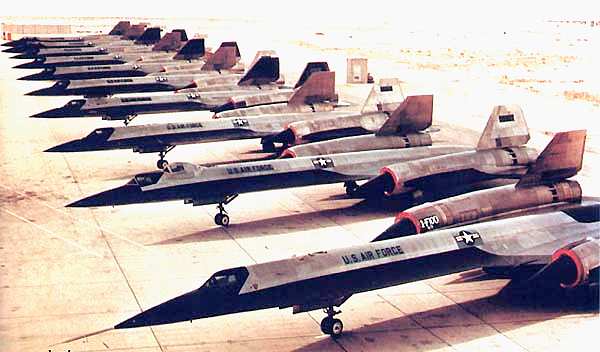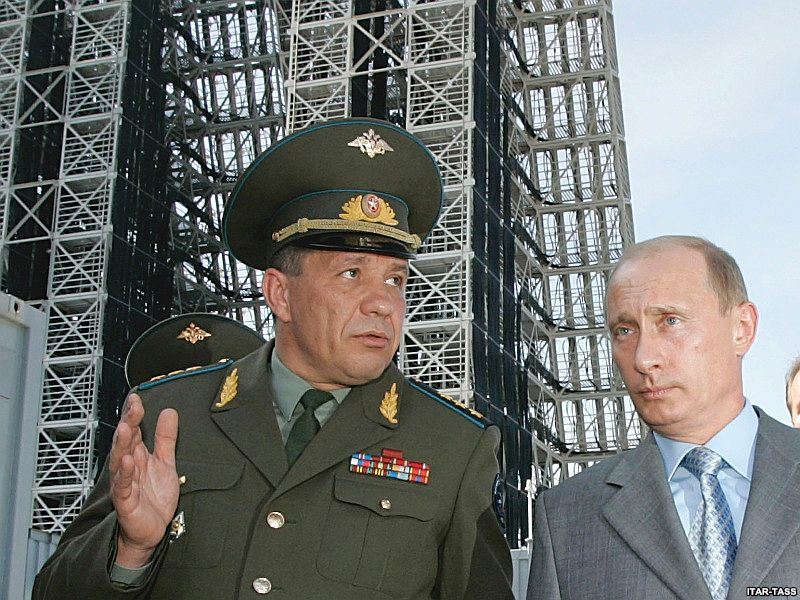The Solomons Campaign: Guadalcanal 7-9 August, 1942 — Assault and Lodgment
This week we get down to brass tacks – the kickoff of what would become the Solomons Campaign. UltimaRatioRegis once again provides this week’s post with the opening stages of the invasion and occupation of Guadalcanal, on this, the 67th anniversary of this signatory battle. And while we’re about remembering, if you haven’t signed the Enterprise petition yet, please make haste to do so… – SJS
Assault Force: The First Marine Division
The formation of the First and Second Marine Divisions on 1 February, 1941 was the first time the USMC had ever fielded a division-sized combat element. Since being hatched out of the 1st Marine Brigade, the First Marine Division had undergone traumatic spasms of growth to fill out the ranks of the three infantry regiments, the artillery regiment, and the other specialized units that comprised the Division’s force list.
The 5th and 7th Marines had been divided and divided again to form the 1st Marines, the third of the Division’s infantry regiments, and 5th Marines had been pirated a second time to form the 1st Raider Battalion. Initially, however, the First MarDiv would be minus the 7th Marines, detached to guard Samoa before the Division sailed from San Diego for Wellington, NZ. In its place would be the newly-formed and largely untrained 2nd Marines, attached from the Second Marine Division.
Almost none of the Division’s junior Marines had been in the Corps prior to Pearl Harbor. These green and inexperienced men had among them a sprinkling of either “Old Breed” active duty Marines or Marine Reservists who had been activated the previous year. With few exceptions, older veterans of France in the previous war, Banana War Marines, or the handful that had seen action against the Japanese earlier in 1942, the Division was almost devoid of combat experience. In the Officer ranks, many were experienced combat leaders, some already legends in the Corps. But none had ever handled a division-sized fight, operationally or logistically.

The Division Commander, MajGen A. A. Vandegrift, was a thirty year veteran with combat experience in Haiti, even serving as a member of the Haitian Constabulary before returning home in 1920. It would be his Division that would test the fledgling amphibious doctrine so painstakingly developed between the wars and practiced so extensively on Culebra the previous year.
Vandegrift fretted about the rather incomplete state of training in his Division as they arrived in Wellington in June 1942, but had been promised that no major combat would be required for six months. Little more than a week later, that same Division would be assigned as the ground combat component of WATCHTOWER, the seizure of Guadalcanal (known by the code name of CACTUS), Tulagi, Gavutu and Tanambogo. Whatever the state of training in First MarDiv, just over 950 Officers and 18,000 Marines embarked for war in late-July, 1942 (The Old Breed, McMillan, George, Infantry Journal Press, 1949 p. 23).
Before departure for the objective, the Division conducted a thoroughly dismal rehearsal at Kodo Island in late July. (This event is well-documented in August’s Naval History Magazine.) Despite the missteps, an important lesson learned was the requirement for organized boat waves to be led toward the beach by larger ships that could provide cover and some fire support. This would help reduce confusion and cut the time required to build up combat power ashore, the critical component to successful amphibious assault.
Amphibious Task Force: Task Force 62
Commanded by Admiral Richmond Kelly Turner, Task Force 62 was comprised of the 13 attack transports, six cargo ships, and four destroyer transports carrying the First Marine Division (REIN). The 1st and 5th Marines, with the attached 2nd Marines, were the infantry backbone of the Division. The artillery regiment, 11th Marines, was reinforced with the 3rd Battalion of the 10th Marines, an artillery outfit from Second MarDiv. The First Marine Division included a task-organized list of units that included a tank battalion, a battalion of amphibious tractors (LVT-1), known as “amtracks”, 1st and 2nd Raider Battalions, engineers, and 3rd Defense Battalion.

Task Force 62 was divided into two groups, Transport Groups 62.1 and 62.2. Transport Group 62.1, known as Group X-Ray, carried the bulk of the First MarDiv, under the leadership of General Vandegrift. Transport Group 62.2, Group Yoke, consisted of a smaller detachment of the Division, and was commanded by the Assistant Division Commander, Brigadier General William Rupertus.
Transport Group X-Ray would execute landings on Guadalcanal, on Beach Red, near the undefended northern coastline just east of Lunga Point. Their mission would be the seizure and defense of the airstrip which was clearly nearing completion.
Transport Group Yoke was assigned the tasks of seizing Tulagi, the small island that contained the British Residence, as well as the twin islands of Gavutu-Tanambogo, hilly land masses connected by a 1,400-foot causeway.
As Task Force 62 slid quietly through the waters north of Guadalcanal in the early hours of 7 August 1942, the Japanese at Rabaul and in the Solomons were entirely unaware of its presence, nor could they have guessed at the intentions of the Americans bearing down on them. At 0614, the naval and air bombardment began (The Guadalcanal Campaign, Maj Zimmerman, John L, USMCR, USMC Historical Branch, 1949, p.25).

Tulagi
The First Raider Battalion and the 2nd Battalion of the 5th Marines (minus one rifle company who went ashore on Florida Island against no resistance) landed on Tulagi’s northwestern shore at Beach Blue, and by late in the day on 7 August had secured the northwestern two-thirds of the island against generally light opposition. The main Japanese force, though, was in the remaining third of the island. Throughout the first night on the island, the Marines fought off desperate night attacks by infiltrating Japanese, killing many enemy despite some anxious moments for those ashore. The next day, 2/5 and the Raiders commenced the final assault, and in sharp fighting reduced the coral caves that had been dug in and around Hill 280 (sometimes referred to as 281), the dominant terrain feature in the southeastern corner of the island.
Tulagi was secured on the afternoon of 8 August, and work commenced immediately on developing a safe-haven anchorage for US ships supporting the Solomons operation.
Gavutu-Tanambogo
Two small islands only a few hundred yards across, Gavutu and Tanambogo were dominated by high ground (Hills 148 and 121, respectively) in the center of each. As was the case on Tulagi’s southern slice, the high ground was festooned with caves and bunkers that required much firepower and even more courage to destroy. The assignment of capturing these islands was given to the First Parachute Battalion, and to Third Battalion, Second Marines. Unlike Tulagi, or the large island of Guadalcanal to the southwest, Gavutu and Tanambogo did not offer the convenience of unopposed landings. Without the benefit of surprise (the activities of the landings on Tulagi and Guadalcanal earlier in the day had certainly roused the defenders) the landing of the Parachute Battalion at 1200 on 7 August on Gavutu was fiercely contested, and casualties were heavy among the assaulting forces.

After dark on the first day, a company from 1st Bn, 2nd Marines (occupying nearby Florida Island) attempted to land on Tanambogo, but were driven off the beach by withering fire. The next morning, the Second Marines’ Third Battalion landed at 1000, and together with Marine units already ashore, began the grim and bloody task of rooting out the Japanese defenders and killing them. As darkness fell on the twin islands, Tanambogo was secured. Though isolated defenders were still being killed weeks later, organized resistance had ceased everywhere except Guadalcanal.
The fight for the three small islands cost the US Marines more than 300 casualties, with 122 killed.(Guadalcanal, Frank, Richard B., Penguin Press, 1990, pg 79) Of the roughly 1,800 Japanese defenders on those islands, very few would survive. This willingness of the Japanese to fight and die without surrender would categorize the rest of the three year war in the Pacific
Guadalcanal (CACTUS)
At 0919 on 7 August, the 5th Marines, followed by the 1st Marines, came ashore at Red Beach, near Lunga Point on Guadalcanal’s northern coastline. The landing was unopposed, as the Japanese in the vicinity of the landing beaches and airfield fled the gunfire and air strikes that preceded the landing. From the first moments, it became clear that the terrain was definitely more challenging than the Marines had anticipated. The objective of the 1st Marines, the “grassy knoll” believed to be relatively close to the landing beach, was actually Mount Austen, nearly ten miles from the landing beaches. Unlike Tulagi, where Australian guides had intimate familiarity with the terrain, the Marines on Guadalcanal had exceedingly poor maps and little intelligence regarding the landscape on which they found themselves. Despite air attacks from Rabaul, the Marines managed to move ashore with minimal difficulty. With only sporadic contact with the enemy, the main opponent of the Marines in the first days ashore was the jungle itself. Movement across the grassy plain was relatively easy, but the jungle presented a supreme challenge to the Marines pushing east toward the Matanikau River.

By the afternoon of the 8th, the prize of the 3,600-foot airfield had been taken, and Vandegrift set his Marines to establishing a perimeter defense of the vital areas. Named Henderson Field after Maj Lofton Henderson, a Marine hero of Midway, the airstrip was still unfinished. On the evening of 8 August, Vandegrift was summoned to a meeting with Admiral R. K. Turner, at which he was informed that the transports, still carrying a large percentage of the Marines’ supplies, were to be withdrawn the next morning, 9 August, instead of the 96-hour window he had anticipated. Admiral Frank Jack Fletcher had informed Admiral Robert Ghormley that he intended to withdraw the US carriers (TF 61) from the waters of Guadalcanal, which would leave Turners transports with minimal protection. TF 62, still carrying vital supplies for the Marines ashore, was leaving. In light of the shortage of shipping from New Zealand, the chaos of unloading on the beach, and the interruption due to Japanese air raids, far less had been unloaded as was anticipated. The US Marine Corps official history called the loss of the transports “a catastrophe” for the men ashore. (Zimmerman, pg. 50)

Even as the American Flag was raised above Guadalcanal on 9 August, the Marines in their thinly held perimeter knew little of the enemy disposition, were having great difficulty in the jungle terrain, and were below minimum of critical supplies such as barbed wire, sandbags, foodstuffs, water, and ammunition. The waters north of the island were empty of American ships, carrying their supplies away with them. What was worse, unbeknownst to Vandegrift or his Marines ashore, the US Navy had suffered a terrible defeat off Savo Island in the early hours of 9 August. They were alone, short of supplies, without control of the sea and air around them. Despite all that, however, there were 12,000 Marines ashore. A foothold had been gained. For the first time since the ANZAC evacuation of Gallipoli in January, 1916, a substantial allied expeditionary force had been landed across the beach with the intention of staying.
Though the battles on the land and in the air and waters of the Solomons had just begun, the landings on Guadalcanal, Tulagi, and Gavutu-Tanambogo offered plenty of lessons to be learned. And the USMC wasted no time in finding them.
Some lessons were immediately taken to heart and remedied. The intelligence estimates on Guadalcanal placed enemy strength estimated as high as 8,000. The Japanese actually numbered fewer than 800, with 1,200 laborers. Maps were wildly inaccurate, and the importance of detailed, ortho-rectified (adjusted to ground truth) aerial imagery was reinforced. (Photos of CACTUS had been erroneously shipped and never reached the Division.)
Amtracks proved themselves mightily, and Marines thought they would be very handy (with some armor added) in carrying assault forces across coral reefs as were encountered on Tulagi, and across the beach. Higgins boats also tested very well, though the need for a front ramp was obvious.
Coral caves, encountered from Tulagi through the end of the war in the Pacific, were oblivious to all but direct hits from heavy caliber naval guns. Reduction by teams of Marine infantry, working with satchel charges and later flame throwers, begun on Tulagi, remained the only true method.
The lack of training in the First Marine Division manifested itself in a noticeable lack of patrolling skills, which are so vital to success in jungle terrain. The formation of a unit of “Scouts and Raiders” under LtCol Bill Whaling, was the precursor to today’s Division Reconnaissance Battalion, while patrolling remains a key element to every ground combat training package in the USMC.
Command relationships, particularly between the Commander, Amphibious Task Force (CATF) and Commander, Landing Force (CLF), needed to be worked out. Admiral Turner remained in tactical control of operations ashore, and on occasion interfered by offering unfeasible suggestions for disposition of forces, and once even directing that a “Provisional Raider Battalion” be formed. The transfer of control ashore began to be hashed out as a critical step in amphibious doctrine, and the form it eventually took is with us today.

However, like any major battle, the landings on Guadalcanal contain lessons directly applicable today for those who care to look. In the study of such events, we must examine those lessons, to ensure they are not lost and forgotten, like a Byzantine library of riches, or declared obsolete, like the trench warfare manuals of 1918 that were unpacked, dusted off, and shipped to Korea in 1951.
Here are a few lessons from Guadalcanal that are pertinent to our 21st Century:
1. Purpose-built amphibious ships are necessary to successfully project power ashore. (FMFRP 12-109-1, The Amphibians Came to Conquer, VADM G. C. Dyer, USN (Ret.), 1969 USMC republication, 1991, pg 404). All of the large transports in TF 62 were conversions from commercial vessels. While somewhat successful, the differences between combat and commercial loading became evident in a distinct lack of cargo space. Among the items left behind in New Zealand were the 11th Marines heavy 155mm howitzers, and optical fire control equipment for the guns of the Defense Battalion, as well as a large number of 2 ½ ton trucks for moving men and supplies inland. Each would have come in quite handy on several occasions.

2. A streamlined system is required for disseminating and obtaining intelligence from aerial reconnaissance conducted by diverse entities. In Admiral Turner’s words, “unity of operational command might have produced a greater feeling of responsibility on the part of the individual reconnaissance aircraft pilot to get his intelligence of enemy forces through to his top operational commanders promptly, as well as more direct communication channels.” (FMFRP 12-109-1, pg 402) The same is true with theater and national level collection agencies today.
3. Beware the notion of assigning amphibious vessels to fill the role of NGF platform. At Guadalcanal, it was determined that positioning of support ships to perform multiple mission (such as controlling boat waves) did not allow for pinpoint naval gunfire as maneuver was restricted by considerations of other duties.
4. Despite exerting great efforts at reconnaissance, including skilled people on the ground, if you are facing an enemy skilled at camouflage and concealment, you may not have a very accurate picture of what awaits you on a hostile shore.
5. Note to those advocates of reduced manning as a money-saving measure: “The second lesson the amphibians learned at Guadalcanal was they just had to have more people in their ships and craft.” The ability to man weapons systems, perform damage control, man the bridge, handle cargo, maintain machinery, and perform the hundred extra tasks that come with venturing toward a hostile beach where the enemy is trying to kill you and sink your ship, requires trained crewmen capable of reacting and making decisions. (FMFRP 12-109-1, pg 349.)

6. The capability to project power across a beach in an amphibious assault comes in awfully handy. Despite the long and loud list of naysayers invoking the ghosts of Gallipoli, the development between the wars of modern amphibious doctrine by the US Marine Corps was perhaps the vital capability to bring American military might to bear against our Axis enemies. Exhaustive study, practice, and more study allowed the USMC to overcome or solve every obstacle, real or imagined, that drove conventional military thinking that large scale amphibious operations were no longer practical in modern warfare. Without that amphibious capability, we don’t get to Guadalcanal. Or across the Pacific to Japan’s doorstep. Or North Africa. Or Sicily. Or Italy. Or France. Or Reims. Or Tokyo Bay.




